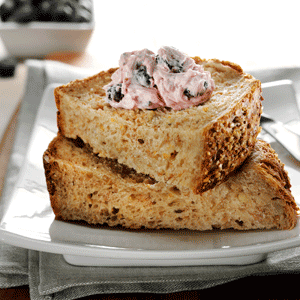The 2011 Functional Foods/Foods for Health Consumer Trending Survey conducted by the International Food Information Council (IFIC), Washington, D.C., reports that the majority (95%) of Americans believe they have some control over their health and that food and nutrition play the most important role in maintaining and improving their overall health. Additionally, an impressive 70% of the 1,000 adults who participated in the web-based survey this spring identified fruits and vegetables as having health benefits beyond basic nutrition. This should not be surprising, as fruits and veggies are packed with lots of good-for-you components including vitamins, minerals and fiber.
|
|
According to the 2010 Dietary Guidelines for Americans, a healthy eating pattern limits intake of sodium, solid fats, added sugars and refined grains and emphasizes nutrient-dense foods and beverages such as fruits and vegetables; whole grains; fat-free or low-fat milk and milk products; seafood, lean meats and poultry; eggs; beans and peas; and nuts and seeds. Specifically, the guidelines recommend that half of our dinner plate should be filled with fruits and vegetables. Recommendations are only worthwhile if implemented, and historically most Americans don’t come close to meeting the guidelines for food and beverage intake.
Dairy processors can assist Americans with meeting their daily fruit requirements by using high-quality fruit ingredients in product formulations — such as using real sliced strawberries in ice cream, not simply strawberry flavoring. Formulating with quality fruit ingredients allows dairy foods marketers to make content claims on package labels, tempting consumers to purchase the product. Some processors will even choose clear packaging to better convey the inclusion of high-integrity fruit.
Ingredient options
Seldom are fresh fruit ingredients used in the manufacture of packaged retail dairy foods; however, their use has become increasingly more common in products intended for foodservice distribution, such as yogurt parfaits and gelato. The good news is that advances in fruit harvesting and processing allow for more value-added fruit ingredient options with varying functionalities.
Frozen fruit ingredients are often used in dairy foods, as they are convenient to work with and typically maintain piece identity. They tend to be bulk-frozen, alone or with added sweeteners, or individually quick-frozen (IQF), a process that helps to minimize damage to texture and nutritional value.
Liquid juices and purées are also common fruit ingredients, particularly for dairy products. Juices can be single-strength or concentrated to varying strengths. Purée is fruit that is crushed, heat- or enzyme- treated to remove pectin and starch, filtered, concentrated to remove water, packaged and sometimes frozen.
 Source: Anuga |
Fruits can be heat-processed and packaged in bulk containers that require refrigeration. Additional heat processing, including a sterilization step, enables fruit to be either canned or aseptically packaged in flexible film. Such products are stable at ambient temperature. Historically, heat-processed fruits have included sweetener and stabilizer and resembled pie filling, having minimal piece identity. Technical advancements allow for ingredients with improved quality, making these ingredients more attractive to dairy processors.
Fruit ingredients come dried, too; however, for the most part, dried fruits are not used in dairy applications. The exception is dried fruit infused with a humectant such as sugar or concentrated juice. The process of infusion basically replaces the water in fruit with the humectant. This results in a 5% to 22% moisture fruit piece that is soft and remains that way, even in frozen applications such as ice cream and sorbet.
And here’s an added bonus when formulating with fruit. Fruit ingredients, with their naturally occurring fructose, can sweeten dairy foods at the same time they contribute to the dairy product’s total fruit content. Some also function as a natural source of color. But remember, FDA does not consider any color added to a food product to be “natural,” no matter what the source. The exception is if the color is natural to the product itself, such as coloring cherry yogurt with cherry juice. Thus, a strawberry ice cream colored with beet juice should not be labeled “all-natural strawberry ice cream.” What is acceptable is “does not contain any synthetic colors.”

